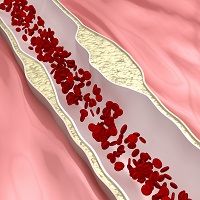New Evidence Points to Potential Biomarker for Giant Cell Arteritis
Advances in genomic study are enabling researchers to narrow down the specific alleles that may contribute most heavily to the epigenetic reasons behind giant cell arteritis and other rheumatic conditions.

There is a great deal of clinical evidence illustrating the genetic component of rheumatoid arthritis (RA), small-vessel vasculitis, and giant cell arteritis (GCA). Now, combined with advances in genomic study, researchers are beginning to narrow down the specific alleles that may contribute most heavily to the epigenetic reasons behind these conditions.
A recent study and meta-analysis in Arthritis Research & Therapy looked at the HLA-DRB1 alleles for a population of GCA patients in Scandinavia. The incidence of GCA is highest in populations with Scandinavian ancestry, and earlier studies pointed to a potential connection to the allele HLA-DRB1*04. But other studies failed to replicate this finding. The relative contribution of genetic and environmental factors as an explanation for geographical differences in GCA incidence also remains in question.
In RA and small-vessel vasculitis, genetically distinct subsets have been identified that have different associations with the major histocompatibility complex (MHC) region that encodes the HLA-DRB1 alleles. In particular, RA susceptibility has been linked to amino acid residues 11 and 13 in the first hypervariable region (HVR1) of class II MHC. Could a similar connection be established for GCA?
For this study, the researchers—all of whom were rheumatologists—recruited cases with a firm clinical diagnosis of GCA, identifying 225 patients who consented to analysis of genetic material for the study. The patients agreed to give a blood sample, and DNA was extracted from peripheral blood. The study authors note that the analysis “confirm[s] a strong association of GCA with HLA-DRB1*04 allele carriage, including within our own UK data, but also identif[ies] possible protective effects of HLA-DRB1*01 and HLA-DRB1*15, supported by the meta-analysis of previous studies.”
According to the authors, this a novel approach to studying genetic influences of disease by combining traditional genetic association studies with geo-epidemiology methods that capitalize on publicly available data. “Our new UK data and a synthesis of the published literature suggest that HLA-DRB1*04 might explain part of the observed geographical variation in GCA incidence. This is consistent with an autoimmune etiology for GCA,” the study authors note.
The study, though, raises additional questions about other, unknown genetic and environmental factors that could contribute to the prevalence of GCA. “From a clinical perspective, the study authors note, “further study of well-phenotyped cohorts is required to determine whether HLA-DRB1*04 may serve as a biomarker of pathophysiologically relevant phenotypic disease subsets in order to develop better risk stratification, prediction of response to glucocorticoids, and ultimately targeted therapies.”